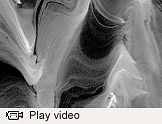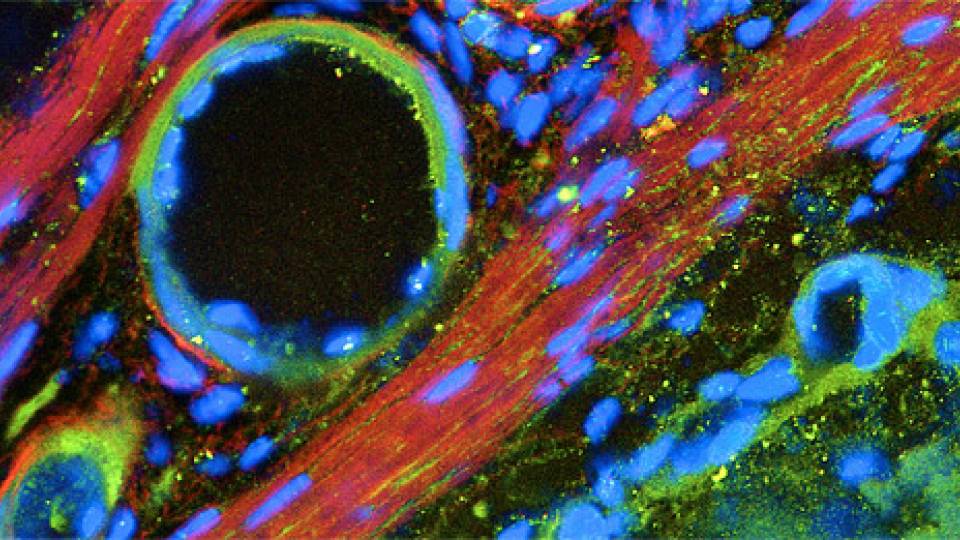"Intelligent design" is the theme of the fifth "Art of Science" exhibition — featuring images made by Princeton University community members during the course of scientific research — now on view in the Friend Center and in an online gallery.
The 56 works featured in the exhibition were chosen from 168 submissions from 20 departments through a competition held this fall. Submissions came from undergraduates, graduate students, postdoctoral researchers, faculty, staff and alumni.

Play the "Art of Science 2011" video to view a selection of the 56 images on display. (Image by Xuening Bai and James M. Stone)
Jurors for the competition were Princeton President Shirley M. Tilghman; Dean of the Faculty David Dobkin, the Phillip Y. Goldman '86 Professor in Computer Science; and Joel Smith, the Peter C. Bunnell Curator of Photography in the Princeton University Art Museum.
"I have to admit it worried me plenty to learn that the theme of this year's 'Art of Science' competition was 'intelligent design,'" Smith said. "What phrase could sound further from science than that? But the year's entries convinced me of the point. Scientific imaging, today more than ever, is matter of design: making your results vivid, compelling, complex and yet persuasively transparent."
Pablo Debenedetti, the Class of 1950 Professor in Engineering and Applied Science and vice dean of the School of Engineering and Applied Science, announced the winners of the competition at an opening reception of the gallery on Nov. 11.
Among the works featured in the exhibitions are the three winning entries in the competition. First place went to "Chaos and Geomagnetic Reversals" by Christophe Gissinger, a postdoctoral researcher in astrophysical sciences and the Princeton Plasma Physics Laboratory (PPPL). Second place was awarded to "Tree" by Zhen James Xiang, a graduate student in electrical engineering. Third place was given to "Dust to Dust, to Planets?" by Xuening Bai, a graduate student in astrophysical sciences, and James Stone, a professor in astrophysical sciences and applied and computational mathematics.
Cash prizes were given to the top three winners of the competitions: $250 for first place, $154.51 for second; and $95.49 for third. These amounts are derived according to the golden ratio, a mathematical proportion found in aesthetically pleasing designs, from seashells to ancient Greek temples.
"Sometimes, while doing science or engineering, art happens, and objects are created that possess true aesthetic beauty," Debenedetti said.
The images will remain on view for a year in the Friend Center Atrium gallery, which is open weekdays from 9 a.m. to 5 p.m.
"Art of Science" 2011 was sponsored by the David A. Gardner '69 Fund in the Council of the Humanities, the Lewis Center for the Arts, PPPL, the School of Engineering and Applied Science, the Princeton Institute for Computational Science and Engineering, the Princeton University Art Museum, and the Office of the Dean for Research.





